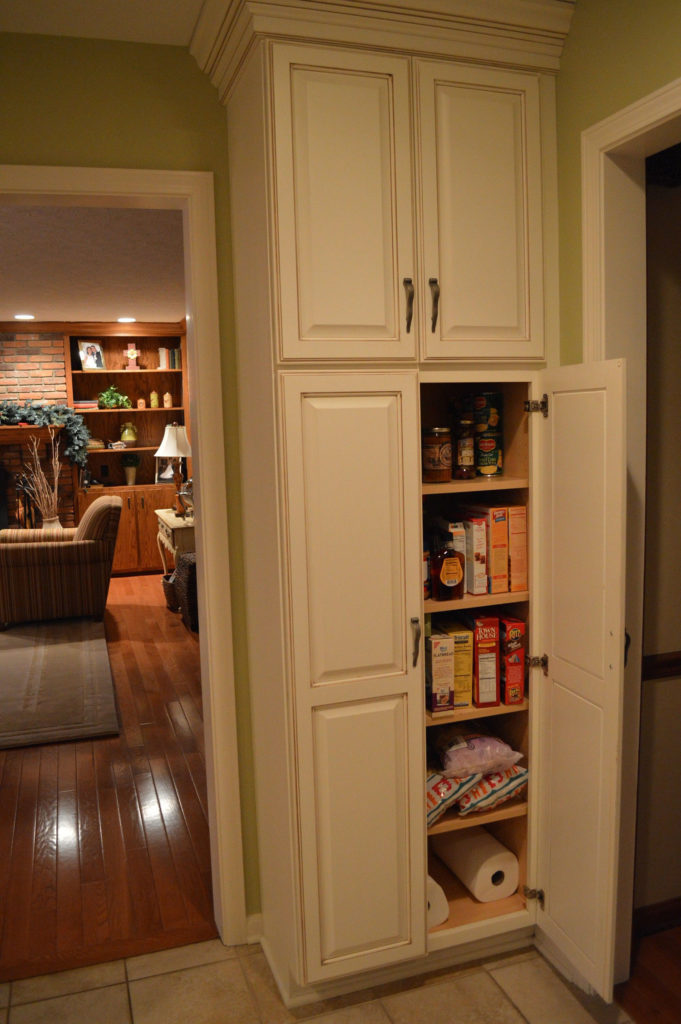
An organized pantry not only makes your kitchen look clean, tidy and attractive; it will also save you time and money. Experts from food service companies say that with some effort and creativity on your part, you can have a functional pantry system that also looks great.
To have the perfect, organized kitchen pantry, follow these tips:
1. Clean and declutter
The first step to having an organized pantry is to remove all the clutter and clean it. Get rid of all expired and unused food products, containers and other items.
After taking out all the unused and expired items from the pantry, do a thorough surface clean. Wipe down the shelves, change the shelving paper, and sweep, vacuum or mop the floors.
2. Invest in shelf dividers
Adding tiered shelves to your pantry can help you maximize vertical space. You will also have an easier time finding items easily in the back of the shelves.
Shelf dividers come in different sizes. You can choose ones that fit your pantry or have them cut to fit your needs.
3. Designate and label areas
Before putting items in the pantry, assign specific areas in the kitchen pantry for different types of food and group them accordingly. Place cereals, oatmeal, bread, jams, spreads and all other breakfast items together in one spot. Put bottled and canned beverages, boxes of tea, coffee, chocolate and other powdered drinks in another area. Place boxed or canned stocks, bottles of oil, vinegar and other condiments in another part as well.
When you follow this organizing tip, you’ll avoid wasting time and energy rummaging through the pantry looking for the items you need. Don’t forget to label the shelves so that you’ll know where to put items and, of course, where to find them.
4. Organize items to save space and time
Arrange packages, ingredients and other products on shelves such that taller items are at the back and shorter ones are in front. In addition, take note of the food products’ expiration dates and put the ones that need to be used up earlier in front.
Also, you don’t always have to store boxes in an upright position. Sometimes, you can create more space by laying boxes flat or on their side and stacking them. For safety purposes, put heavier items and glass containers on the lower shelves.
5. Be creative in using and maximizing storage options
Place bags of foods that don’t stack well in clear bins, baskets or shallow wire baskets that can be hung underneath shelves. If your pantry has a door, use this space as well. Have a rack installed on the back of the door. This rack will help prevent overcrowding in your cabinets and make it possible to have everything at your fingertips.
The additional baskets and shelves will give you extra storage space for canned goods and other dry foods and cleaning supplies.
6. Store opened food products or packages properly
To avoid cluttering your pantry with dozens of opened food packages, transfer the contents or products to clear plastic canisters, containers or glass jars. Make sure these containers close properly and securely to maintain freshness, and ensure that you can label them. If you’re still looking for containers, choose stackable ones to maximize space.
If you don’t want to transfer opened packages to containers, roll up the bag tightly and fasten a rubber band around it. Place the package in a clear resealable or Ziploc bag to keep the item fresher longer and to avoid spilling the contents.
7. Designate an area for cooking equipment, utensils and other non-food items
Do not mix cooking utensils, equipment and other inedible items with your food products; place them in a separate area. This means allocating sections for boxes of foil and plastic wraps, paper towels and napkins, and cooking equipment such as slow cookers, blenders, food processors and mixers. Place cleaning supplies far away from food products as well, preferably in a different area of kitchen.
8. Assess and clean your pantry weekly
Lastly, keep your pantry organized and in good shape by taking a few minutes every week to do a quick inventory. Check the products and their expiration dates. If you discover expired items or spoiled fruits, vegetables and herbs, chuck them out immediately.
When you know what products you have in your pantry and which ones can still be used, you will have an easier time planning your menus. You will also avoid buying and stocking duplicate items.
Don’t forget to clean your pantry and organize at least once a week. Wipe down the pantry shelves, and vacuum and/or sweep the floors. Put items back to their proper places so that you’ll always have a tidy and accessible pantry.
With an organized and clean pantry, preparing and cooking meals will be easier and faster. You will have a more aesthetically appealing kitchen as well.
AUTHOR BIO
Jad Asaad is the Marketing Manager at Horeca Trade LLC with more than eight years of experience in digital, online and offline marketing. He started his career in Beirut working in a creative agency and then moved to Dubai to further expand his career. He created and implemented award-winning high-impact digital and offline marketing campaigns that consistently generated revenue streams and improved performance in targeted segments.
https://www.linkedin.com/in/jadasaad/